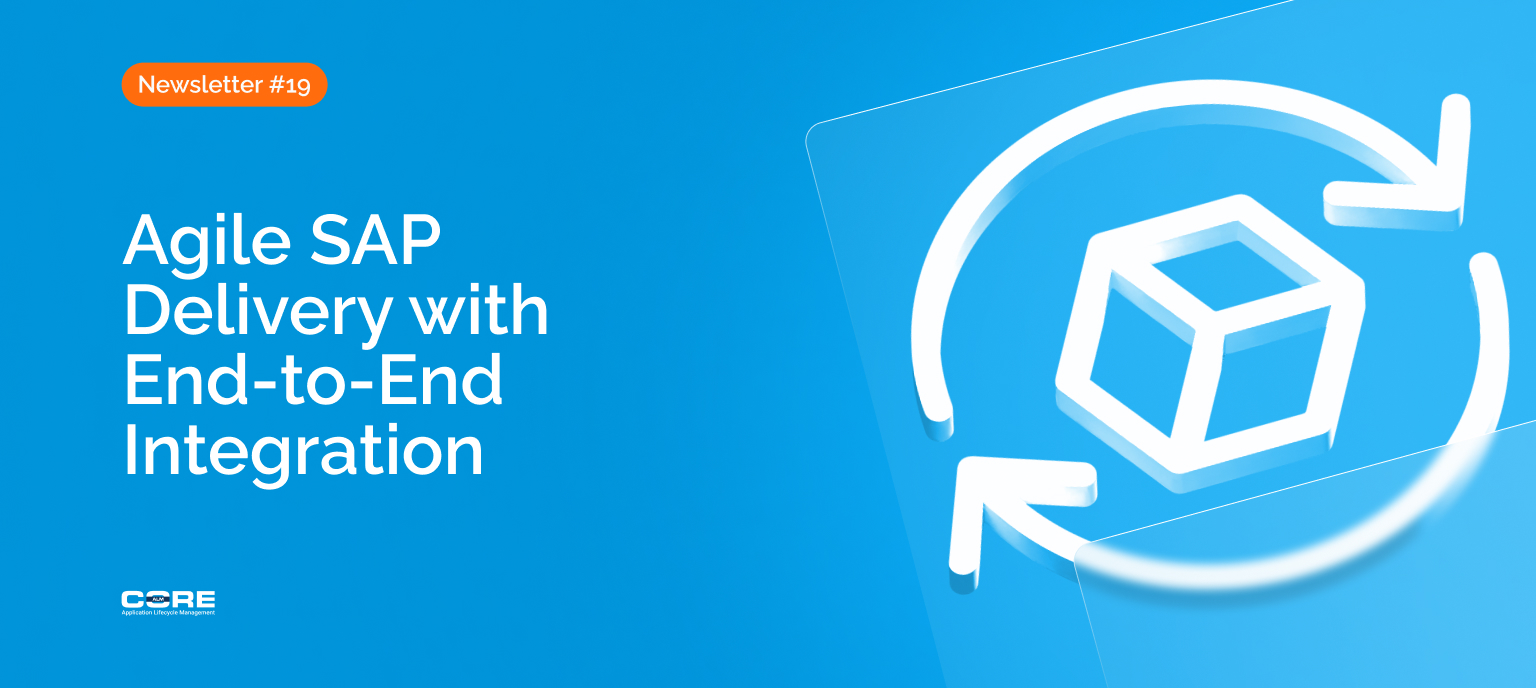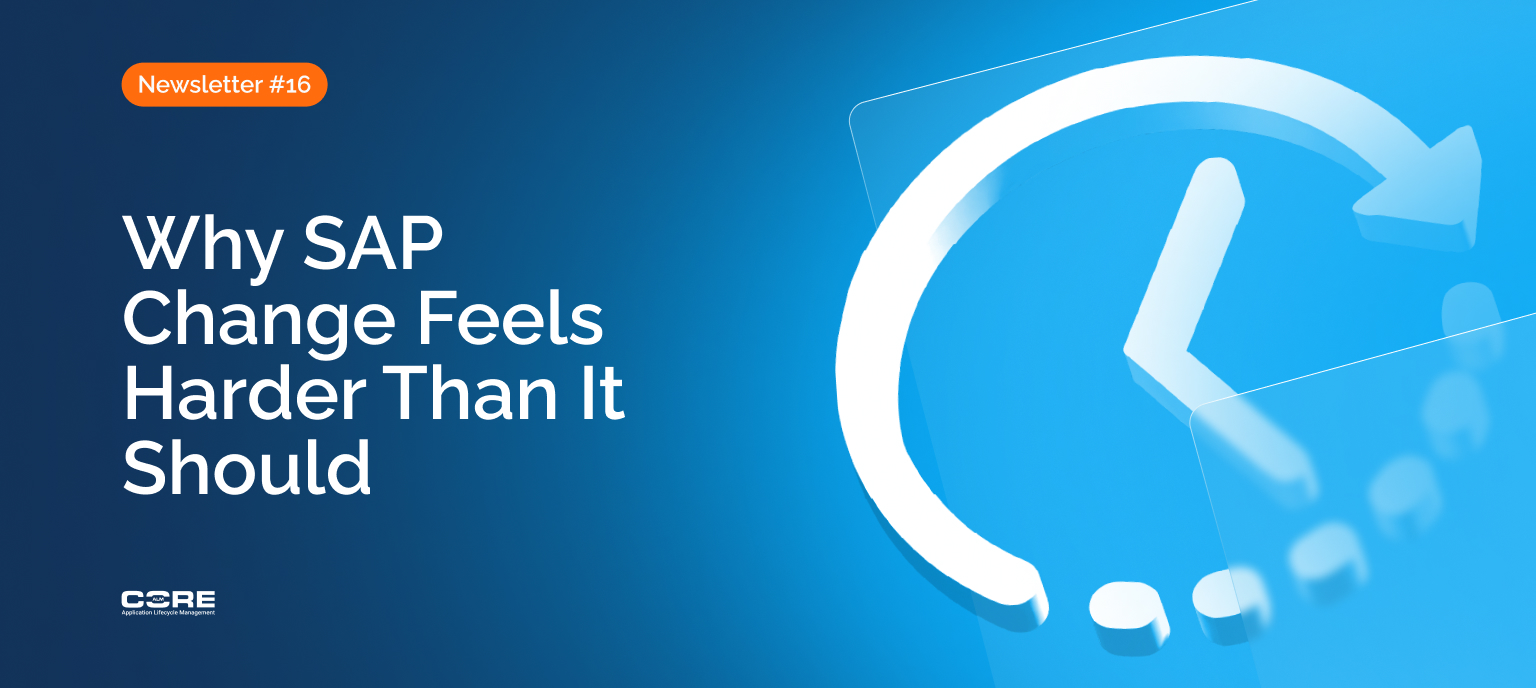What You Lose When SolMan Retires - And How to Cover It

In this edition we look at why the retirement of SAP Solution Manager (SolMan) is not a catastrophe—it’s a chance to rethink and retool your entire change management process.
Stop Counting Losses—Start Planning Gains
SolMan’s sunset is more than an end-of-life event—it’s an opportunity to unify and modernize your enterprise change management.
The headlines are clear: mainstream support for SAP Solution Manager ends in December 2027 and extended support runs only until 2030, marking the official end‑of‑maintenance schedule. This has triggered anxiety about losing mature features like ChaRM, ITSM, test management and Focused Build with no clear answer on how to replace those capabilities.
But focusing solely on what will disappear misses the bigger opportunity. SolMan’s end of life is a catalyst to rethink how you manage your applications across the entire enterprise—not just within SAP.
In today’s hybrid landscapes, separate tools and siloed processes for SAP and non‑SAP changes create fragmentation, duplication and blind spots. With artificial intelligence and continuous delivery becoming core to transformation, organisations can no longer afford disconnected workflows. By using SolMan’s sunset as a forcing function to unify your change, testing and monitoring processes, you stand to gain speed, compliance and agility far beyond what SolMan ever offered.
SolMan’s sunset is more than an end-of-life event—it’s an opportunity to unify and modernize your enterprise change management.
Why It’s an Opportunity, Not a Liability
By replacing fragmentation with unification, SolMan’s retirement becomes the spark for enterprise-wide ALM transformation.
Most organizations have kept the same ALM practices in place for over 10 years with minimal enhancements. The ones that take this opportunity to streamline their processes will move faster. Here are some of the benefits that can be achieved:
- Unified governance across SAP and non‑SAP – A single enterprise change process eliminates manual synchronization and ensures end‑to‑end traceability. This reduces risk of outages and accelerates digital initiatives.
- Modern, cloud‑native tools – SAP Cloud ALM is designed for standardised, cloud‑first operations. Although it doesn’t replicate ChaRM, it delivers lightweight project management and monitoring and is rapidly evolving. Pairing Cloud ALM with Agile and DevOps tools like Jira or Azure DevOps provides the benefit of simplified cloud-based integration with SAP.
- Built‑in AI & automation – AI thrives on unified data. Connecting process, test and transport information across tools creates the foundation for predictive analytics, automated impact analysis and self‑healing systems.
- Future‑proof compliance – Governance gaps appear when features such as ChaRM or Focused Insights lose support. Moving to a unified process with auditable workflows, digital signatures and automated risk checks protects your clean core and satisfies auditors.
By replacing fragmentation with unification, SolMan’s retirement becomes the spark for enterprise-wide ALM transformation.
From Replacement to Upgrade: Designing a Unified Workflow
Don’t clone SolMan—build a smarter, integrated process across SAP and non-SAP tools.
Don’t look for a SolMan clone. Instead, architect an enterprise‑wide ALM workflow that treats SAP and non‑SAP changes equally. Start by mapping your existing SolMan usage—change control, test suites, monitoring—and determine which functions remain essential. Then design an integrated process that spans:
- Single change record – Consolidate requests and approvals in an enterprise platform such as ServiceNow, Jira or Azure DevOps. Synchronize transport metadata instead of duplicating tickets.
- Automated transport control – Leverage tools that handle SAP transports without ChaRM, including sequencing, and automated retrofit management. This eliminates the need to maintain SolMan for transport governance.
- Connected testing – Use AI‑driven impact analysis and test automation to trigger the right tests based on change scope. Integrate test results back into your change workflow for continuous feedback.
- Central monitoring and analytics – Combine Cloud ALM’s lightweight monitoring with deeper diagnostics platforms. Feed operational metrics into your enterprise dashboard to gain a real‑time view of risk and performance.
- Data foundation for AI – A unified process produces the clean, rich data sets that machine learning needs. This paves the way for intelligent recommendations, anomaly detection and autonomous operations.
Don’t clone SolMan—build a smarter, integrated process across SAP and non-SAP tools.
CoreALM: Your Partner in the Shift
We help organizations modernize their ALM strategy—starting with process, not just tools.
At CoreALM, we’ve spent over fifteen years helping SAP customers bridge the gap between SAP and enterprise platforms. Our philosophy is simple: modernise your process, then choose the right tools. As SolMan retires, our solutions offer immediate benefits:
- Native integration with ServiceNow, Jira and Azure DevOps – Our Enterprise Transport Management Suite offers configurable transport management actions with role-based controls. This enables teams to create and manage SAP transports without leaving their existing ticketing systems.
- Advanced automation – Built‑in shift-left automations accelerate delivery while ensuring compliance. Support for multiple parallel landscapes keeps project and maintenance streams in sync.
- Comprehensive reporting – All your change management data is stored directly in your enterprise change management tools. Use our out-of-the-box reporting, or build your own custom dashboards.
We help organizations modernize their ALM strategy—starting with process, not just tools.
Make the Most of the Moment
SolMan’s sunset is your chance to build for the future.
SolMan’s retirement isn’t just about losing features; it’s a call to reimagine how you govern change across your organization. By building a unified, AI‑ready process now, you’ll unlock agility, reduce risk and prepare your landscape for the next decade of innovation. Don’t let this be a painful forced migration; make it the catalyst for an upgrade your business will thank you for doing.



